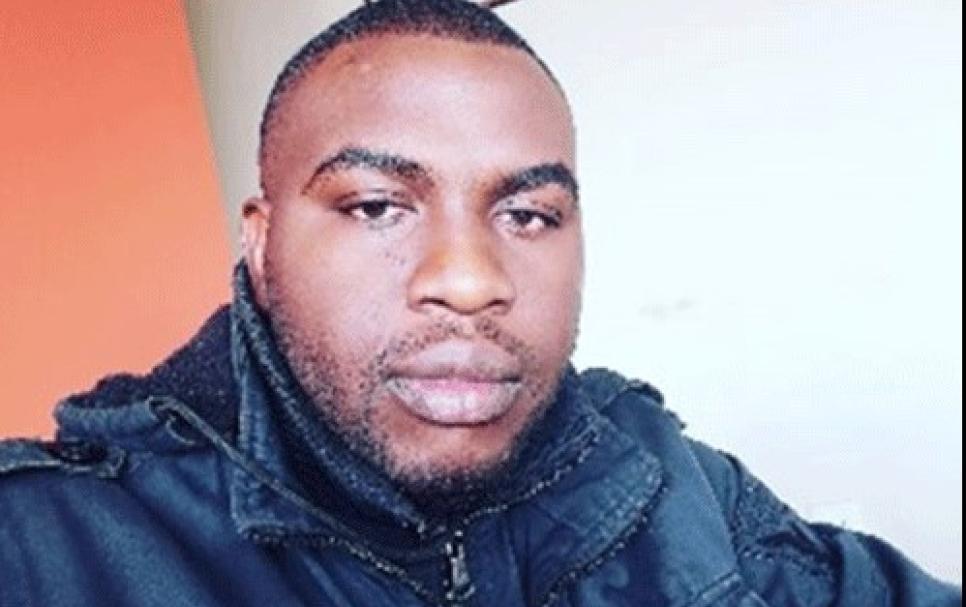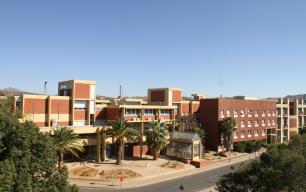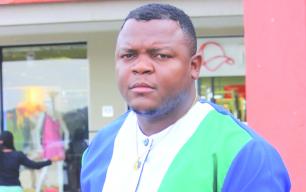Mafwe’s Royal Lusata: Metaphor of Diversity and Unity

Cultural festivals have long served as beacons of identity, continuity, and unity for many communities in Africa and beyond. They provide a platform where tradition, spirituality, and collective memory intersect. In African ancient kingdoms, festivals played central roles in governance, religion, and the preservation of cultural heritage in ensuring that people remained connected to their ancient history while vitalizing bonds among community members.
One notable example is the Igue festival, dating back to the 14th century. This annual thanksgiving celebration by the Edo people of the Benin Kingdom in Nigeria, mark the end of the year with rituals of gratitude to God and ancestors for peace and prosperity. The festival includes paying homage to the Oba (king), cultural dances, singing, and the offering of peace leaves (Ẹwerẹ), with rituals aimed at seeking continued peace and prosperity for the kingdom in the New Year. It symbolizes unity between the ruler and his people, while also promoting continuity of political authority and cultural identity (Omoregie, 2016). Similarly, the Ashanti Kingdom in Ghana preserve its identity and unity through festivals such as the Adae Kese.
This festival honor ancestors, celebrate harvests and major achievements, and affirm loyalty to the Asantehene (king). Through collective participation in rituals, drumming, dancing, and sacrificial rites, the festival serve to sustain Ashanti cultural traditions while preserving the memory of the Sika Dwa Kofi (Golden Stool), the enduring symbol of Ashanti unity (McCaskie, 1995). In Ancient Egypt, festivals such as the Opet festival was central. The Opet festival, held in Thebes, involved processions of the statues of Amun, Mut, and Khonsu from Karnak to Luxor. This not only renewed divine blessings but also fortified the Pharaoh’s legitimacy as a divine ruler. Such an event unified Egyptian society across generations, linking identity, spirituality, and political order (Shafer, 1997).
In Southern Africa, the Zulu Kingdom maintain cultural continuity through festivals such as the Umkhosi woMhlanga (Reed Dance). It is an event celebrating womanhood, purity, and loyalty to the Isilo Samabandla Onke (Zulu king). Young maidens gather reeds and present them in a collective ceremony, reinforcing unity among diverse communities while sustaining cultural values (Msimang, 1991). Equally, the Kuomboka cultural festival of the Lozi people in Zambia, one of Africa’s most celebrated traditional ceremonies. The festival, whose name means “to move out of the water,” marks the seasonal migration of the Litunga (Lozi king) from the flooded plains of Lealui to the higher ground of Limulunga. The event is characterised by royal barges, traditional music, and dance, symbolizes both the resilience and adaptability of the Lozi people.
In Namibia, a land enriched by diverse ethnic and cultural groups, festivals such as Omagongo, Garma, Küste Karneval, Enjando Street festival, and Nama cultural festivals, to mention a few, assimilate the nation’s living cultural identities. Within this vibrant mosaic, the Lusata cultural festival of the Mafwe tribe shines as a powerful symbol of both diversity and unity. Held annually on the last Sunday of September at Linyanti tribal khuta in Chincimane royal village in the Zambezi Region, the festival is not merely a celebration of Mafwe ancient cultural heritage, but also a mirror of Namibia’s extensive cultural panorama.
It honors ancestral traditions while affirming the value of national order. With its deep history, expressive cultural performances, and enduring social relevance, the Lusata cultural festival stands as a proud testament to Namibia’s multi-ethnic identity and to the unifying strength of order within diversity.
Background
The Lusata cultural festival derives its name from the Lusata royal mace. Lusata is a Silozi word that means “stick.” The royal mace is one of these sacred instruments of power and authority that can only be held by a reigning Mafwe Litunga (chief) and is seen by the public once a year during the Lusata procession. The Mafwe tribe, an ethnic group native to Namibia’s Zambezi Region formerly the Caprivi, trace their royal lineage to the Lozi/Barotse Kingdom of Zambia and have a history intertwined with migration, settlement, and resistance against colonial rule.
The Mafwe tribe is a heterogeneous one, where as its sub-tribes continue to be a multi-lingual community, comprised of the following linguistic categories, segments, or clans united under one tribal leader: bena-Linyandi (descendants of the Luyana and a few remnants of Sebitwane’s Kololos), Totela (bena Luhani and bena Chilao), ba-Fwe, ba-Mbukushu, ba-Subiya-Fwe (Bekuhane/bena-Mahe). Until 1992 and 2004, some of the Yeyis and Ba-Fwe speakers splintered off and installed their own chiefs, all of these groups had been living in harmony under Litunga Mamili since the turn of the last century (Lilemba, 2009).
The festival honors the Mafwe’s past and acknowledges their cultural resilience, especially in maintaining traditions despite the pressures of modernisation and any form of external influence. The present Litunga is George Chikandekande Simasiku Mamili VII. Past Litungas includes, Imataa Kabainda (Kabende) Mamili I, Lifasi Imataa Mamili II, Denten Simataa Lifasi Mamili III, Noah Simasiku Imataa Mamili IV, Richard Temuso Muhinda Mamili V and Boniface Bwimo Bebi Mamili VI. During the festival, the Litunga advises his people on a variety of topics impacting them and evaluates government activities occurring in his area of mastery through his spokesperson. The Lusata festival began as a tribal event centered on Mafwe tribal unity and cultural pride.
However, over time, it evolved into a national and regional celebration, attracting people from different ethnic groups, nationalities, and backgrounds. In 1981, the former Mafwe Litunga, Richard Temuso Muhinda Mamili V founded the Lusata ceremony.
The date of Lusata is historic. “Late Litunga Richard Temuso Muhinda Mamili V became a Mafwe leader on Friday, 17 September 1971. When the Lusata royal mace was made, there were discussions to dedicate 17 September as “Richard Muhinda Mamili V Day.” In the end, it was decided that Lusata would be celebrated on the last Sunday of September each year, in honor of Litunga Muhinda Mamili V, who became Mafwe tribal leader in September. The founder chose not to fix it to a single calendar date, since that would fall on a different weekday every year. Instead, Sunday was chosen so that the commemoration could always be observed uniformly.
Lusata day is therefore of great importance, reminding us of the month in which the founder of the Lusata became Mafwe leader” (R.M. Mutelo, personal communication, August 17, 2025). The festival reflects the importance of the Litunga in maintaining peace and order, not only within the Mafwe community but also among neighboring tribes. As Namibia continues to nurture its post-independence identity, the Lusata festival serves as a touchstone for the values of unity, mutual respect, and cultural preservation as per Article 19 of the Namibian Constitution.
Lusata festival as a metaphor of diversity and symbol of unity
Namibia’s cultural outlook is a mosaic of different ethnic groups, each with its distinct language, traditions, norms and customs. The Lusata cultural festival showcases the heritage of the Mafwe people while bringing together other cultures, making it a true celebration of diversity. During the festival, dances, attire, and rituals tell stories of Mafwe history and preserve ancestral traditions. It also provides a platform for intercultural dialogue, showing how communities can celebrate their uniqueness while respecting one another. More so, the festival includes paying homage to the Mafwe Litunga, thanksgiving, cultural dances, singing, and showing allegiance and loyalty.
At the same time, Lusata emphasizes unity. The Litunga’s role and the procession with the royal mace symbolize leadership, authority, solidarity and sovereignty over the Mafwe people. Through speeches of peace and cooperation, the festival reminds Namibians that cultural pride and unity strengthen the nation.
Socioeconomic and political outlook
In addition to its cultural weighty, the Lusata cultural festival holds economic and political value for the Mafwe tribe and Namibia as a whole. The festival attracts thousands of participants and visitors, many of whom travel from other parts of Namibia and neighboring countries. This influx of visitors boosts the local economy, providing opportunities for local artisans, farmers, and business owners to showcase and sell their goods. Traditional crafts, foods, and garments are in high demand during the festival, reflecting a fusion of cultural celebration and economic empowerment.
The Lusata festival also serves as a political stage where leaders address issues affecting the community and the nation. Political figures, central government representatives, and local authorities often attend the event, using it as an opportunity to connect with the people, hear their concerns, and engage in discussions about any form of development, governance, and social justice. The festival’s emphasis on accountability and leadership reinforces the idea that cultural events can serve as platforms for promoting transparency and good governance in Namibia.
The festival’s role in Namibia’s national identity
Namibia’s path to independence was marked by decades of political and economic struggle, colonial oppression, and ethnic division. Since achieving freedom in 1990, the country has worked tirelessly to forge a national identity that transcends ethnic and cultural differences. The Lusata cultural festival contributes to this effort by highlighting the importance of cultural preservation alongside national unity, this reflects Namibia’s commitment to building a nation that celebrates its diversity in harmony.
The metaphor of unity in diversity, encapsulated by the Lusata festival, speaks to the heart of Namibia’s post-colonial identity. The festival reinforces the idea that a strong national identity does not require the erasure of ethnic and cultural differences but rather their inclusion in a wider narrative of unity. This message is particularly relevant in a country like Namibia, where colonial powers once sought to divide and rule based on ethnic lines. The Lusata festival stands as a counter-narrative, promoting the belief that unity is possible when diversity is embraced, respected, and celebrated.
To end, Maya Angelou, who was an American memoirist, poet, and civil rights activist reminds us that there is both beauty and strength in diversity. As Namibia continues to navigate its post-independence journey, the Lusata festival serves as a reminder that the strength of the nation lies in its ability to balance diversity with unity. As cultural festivals continues to promote inter-cultural dialogue, and providing a platform for political and economic engagement, the Lusata cultural festival exemplifies how cultural traditions can play a vital role in shaping a more inclusive, cohesive, and unified Namibia.
Than ever, you are warmly invited and welcome to the grand Lusata cultural festival. Join us at Linyanti Khuta on 28 September 2025, in the majestic Chincimane Royal Village. Together, let us honor tradition, celebrate unity, and embrace the spirit of our cultural heritage for the betterment of our beautiful Namibia.
Shangwe, Luitumezi!
Munyungano Musisanyani.
- 612 views










Comments